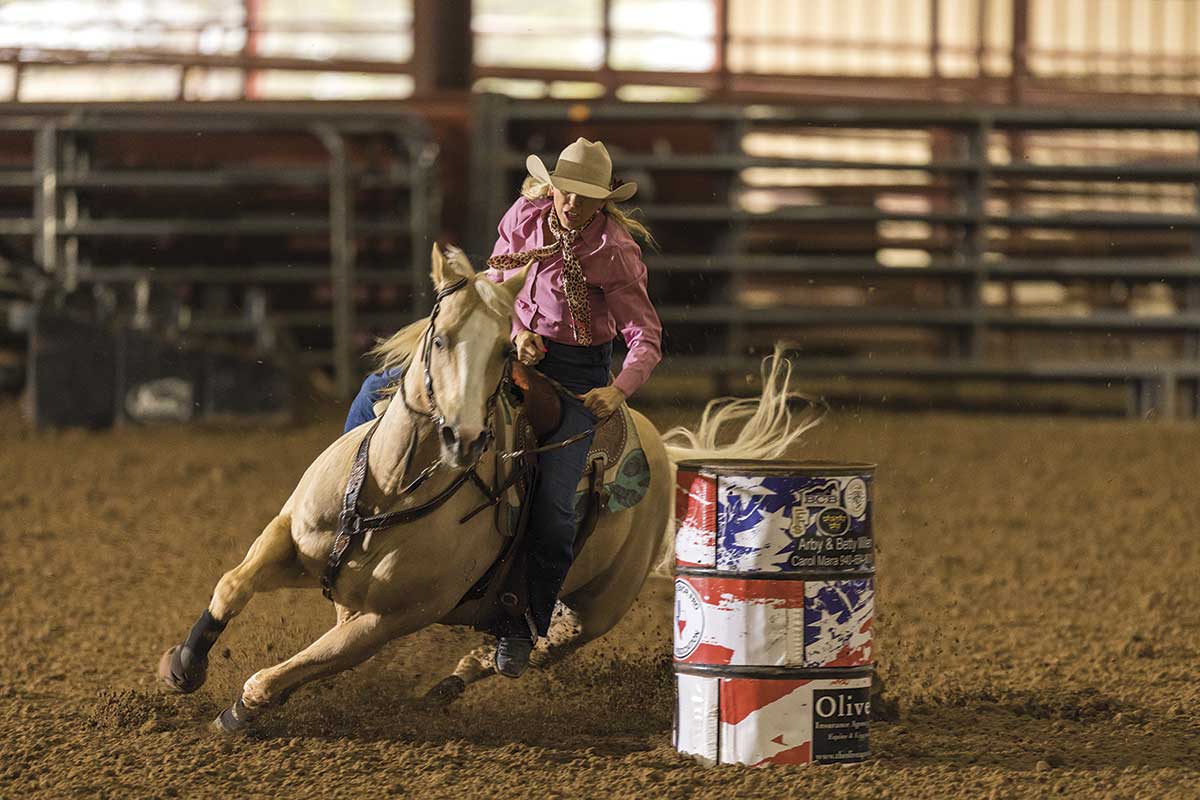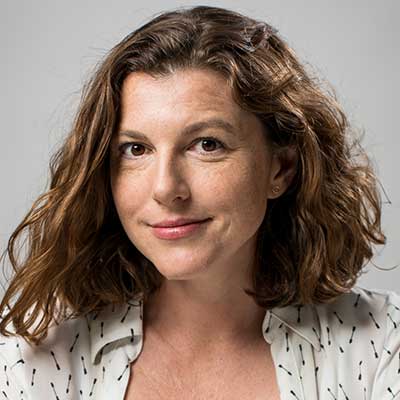Competitors pace their horses before a barrel racing event on a warm October day at Circle T Arena. It’s the statewide finals, and competitors are wearing their finest—spotless boots, hats and tack. Their high-strung mounts trot back and forth at the dusty arena in Hamilton, about 70 miles west of Waco, awaiting their call times.
When the clock starts, horse and rider burst from the gate in a blaze of energy and graying hair. Precision turns, pivots and raw speed streak through the arena. Cheers of support rise from the grandstands: “You got this, Grandma!” and “Let’s go, Gram!”
It’s all over in a few blinks.
Billie Bright, 63, takes the win with a time of 15.8—only 2.5 seconds slower than the current national champion, who is about 35 years younger. Not bad for an oldster. Four-time National Finals Rodeo world champion Hailey Kinsel, 29, holds the fastest barrel time—13.34 seconds.
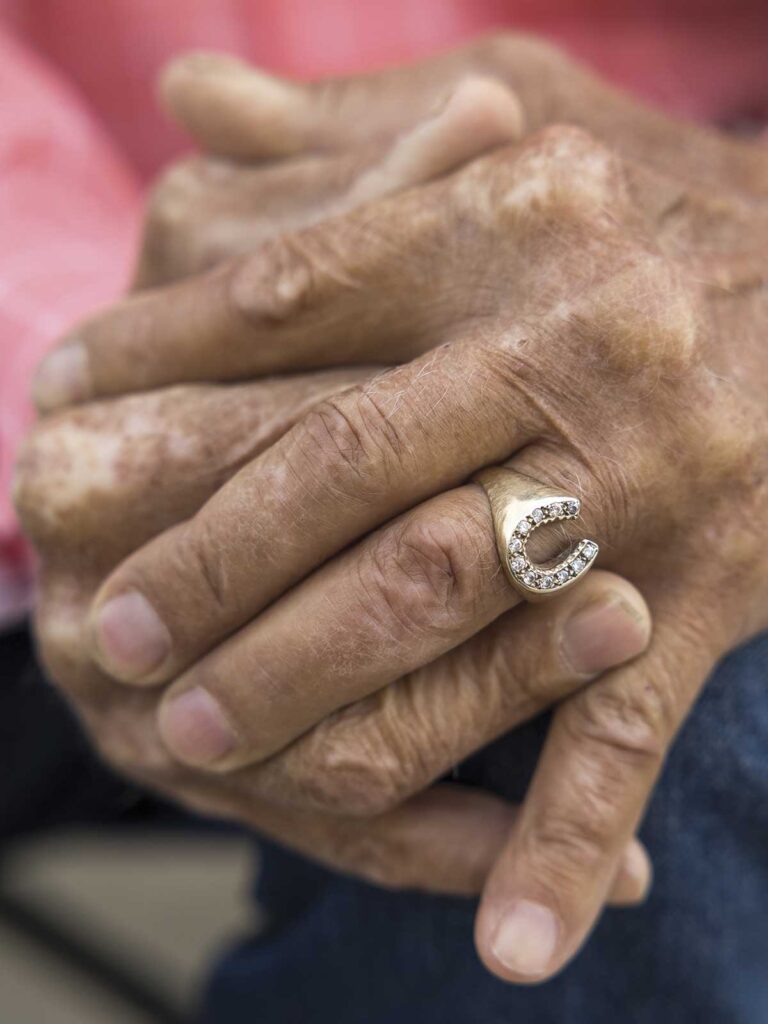
The 88-year-old hands of Jimmy Tobolka await their next chance to rope a calf.
Julia Robinson
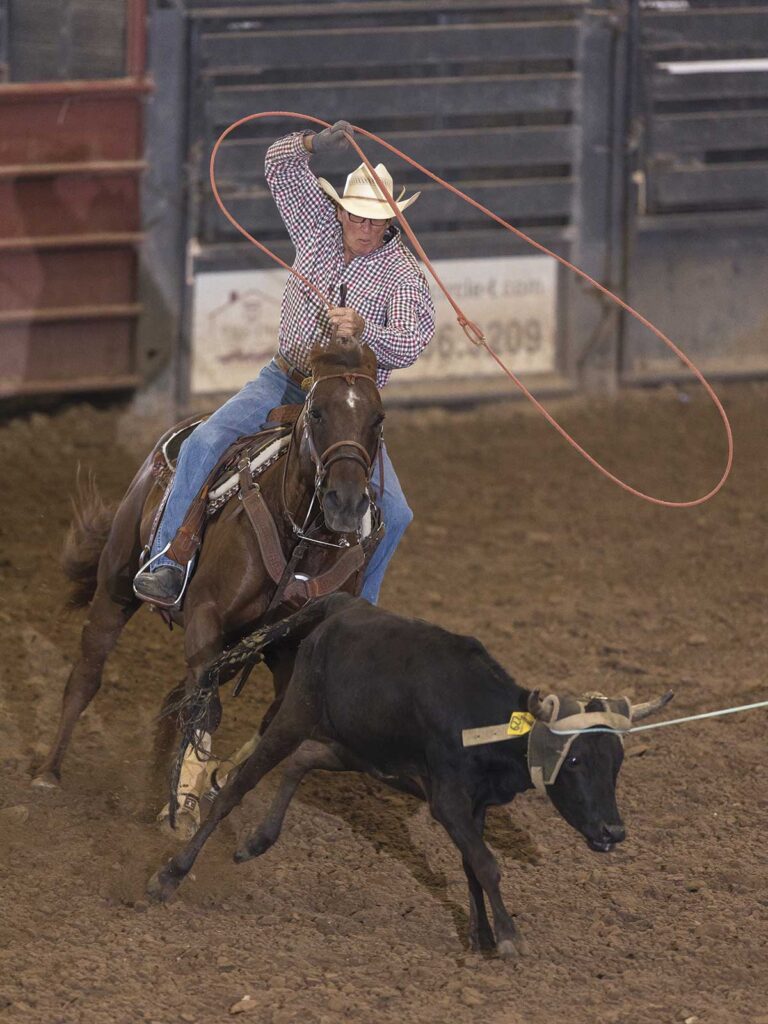
Doug Richards of Bedias closes in on a calf.
Julia Robinson
Today’s statewide finals are one of the 23 events the Texas Senior Pro Rodeo Association, celebrating 45 years in 2023, hosts for competitors 40 and older. Rex Sandifer’s father, Morris, was one of the founding members of the organization in Waco in 1978.
“There were lots of amateur rodeos at the time, but it’s just difficult as a 40-year-old to compete against 20-year-olds,” Sandifer says. So Morris and a few other aging cowboys organized calf roping events for the older crowd. That grew into steer dogging, bareback and bull riding. “And all of them said, well, why don’t we just go in and make a rodeo association out of it?”
The TSPRA put on full rodeos, including bull and bronc riding, in the 1980s. “There were probably two or three of those guys that were pretty good bull riders, and then the rest of the guys were people who wished that they were bull riders earlier in their lives,” Sandifer says with a laugh.
The decision was made to drop the more dangerous events from the schedule but not because they didn’t have competitors. “It was hard to get producers to haul animals for eight or 10 people,” says Sandifer, a member of Bluebonnet Electric Cooperative.
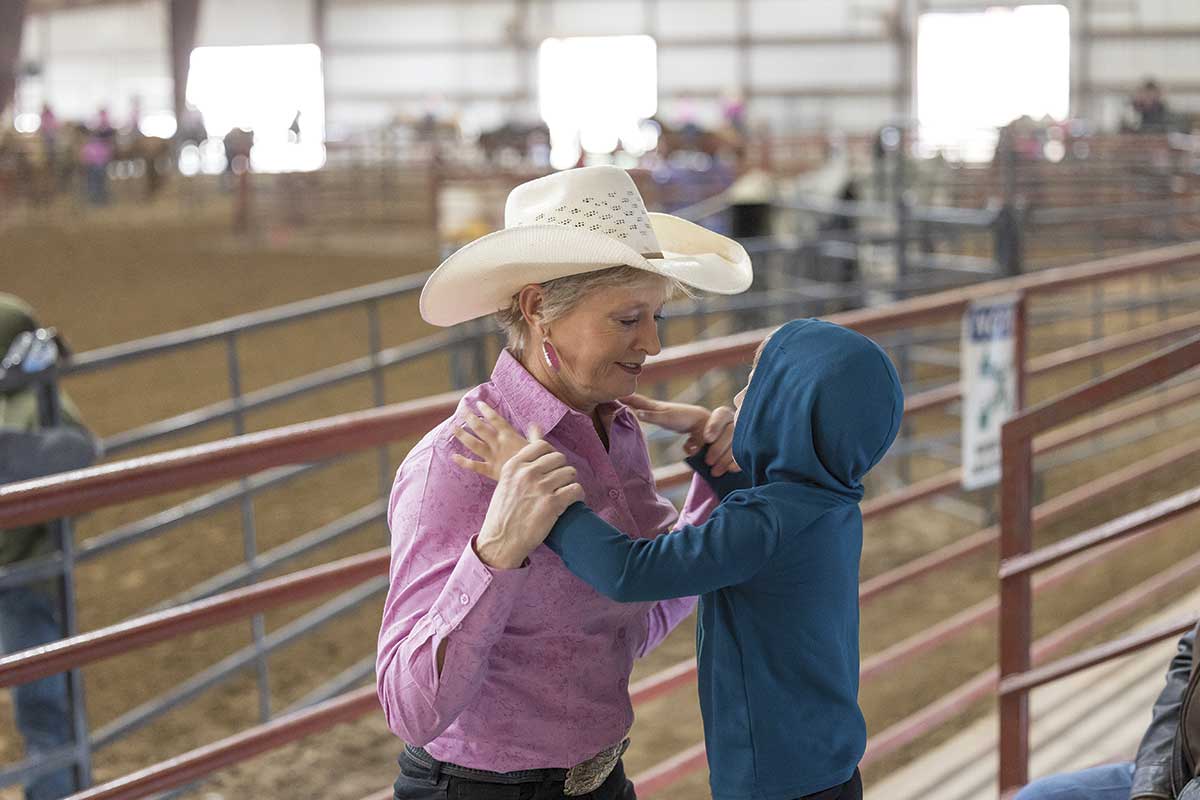
Karen Little of San Saba gets a hug from her grandson Asher.
Julia Robinson
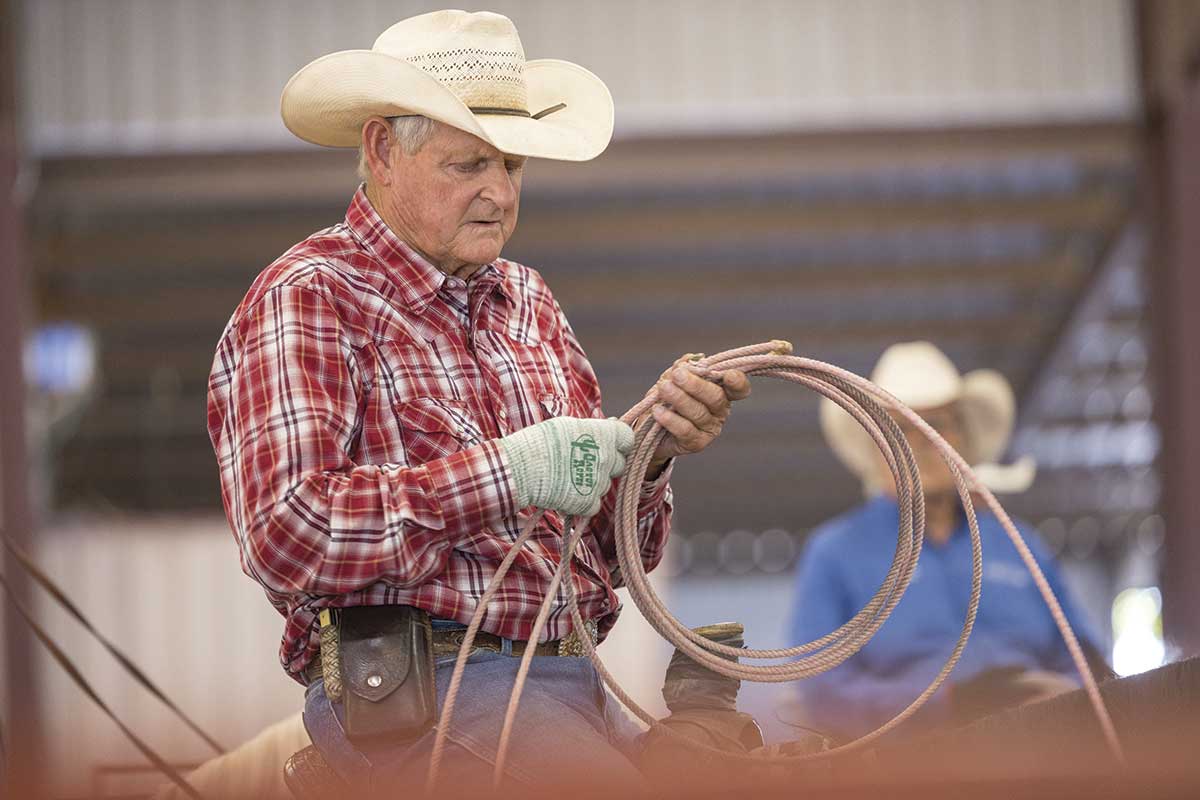
Rex Sandifer of Elgin prepares his lasso. His father, Morris, was one of the founders of the senior circuit in 1978.
Julia Robinson
Today, many of TSPRA’s 300-plus members are former pro rodeo riders, ropers and barrel racers from Louisiana, New Mexico, Oklahoma and Texas. Ages range from the association minimum into the 80s, and competitors are grouped by age. But some old-timers can still beat the young whippersnappers, and many older members choose to compete in multiple younger divisions.
“Some people join and think it’s going to be easy because it’s all old-timers, but we have cowboys and cowgirls that are still going to circuit finals and winning open rodeos,” says Beverly Shoaf, secretary of the TSPRA board of directors.
Bright, a member of Taylor Electric Cooperative from Baird, has been competing in rodeos for 50 years and is one of the top barrel racers in the 60-plus division. She has had to refine her approach.
“For me, at my age, I’ve learned that I can’t ride just every horse that comes around,” she says. “I have to look for a horse that moves a little smoother and doesn’t throw a whole lot of torque.”
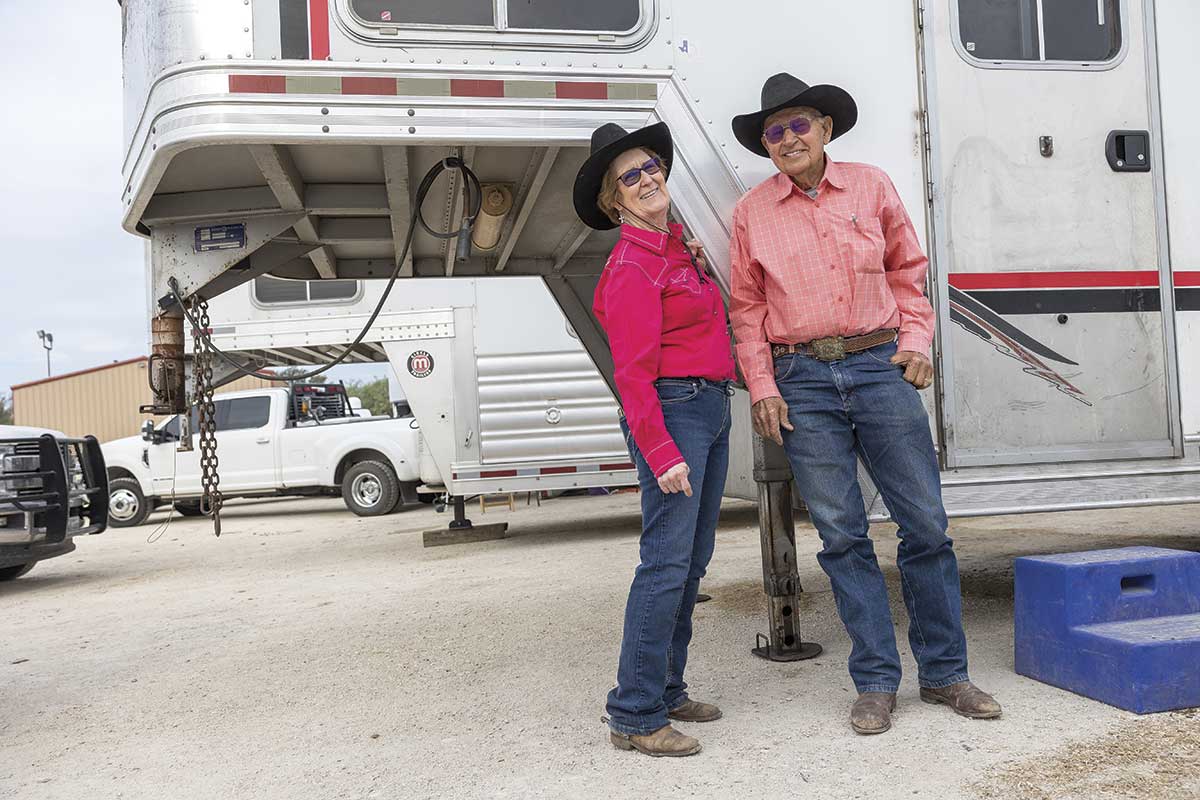
Pat and Jimmy Tobolka of Caldwell are regular TSPRA competitors. Jimmy, at 88, is the circuit’s oldest member.
Julia Robinson
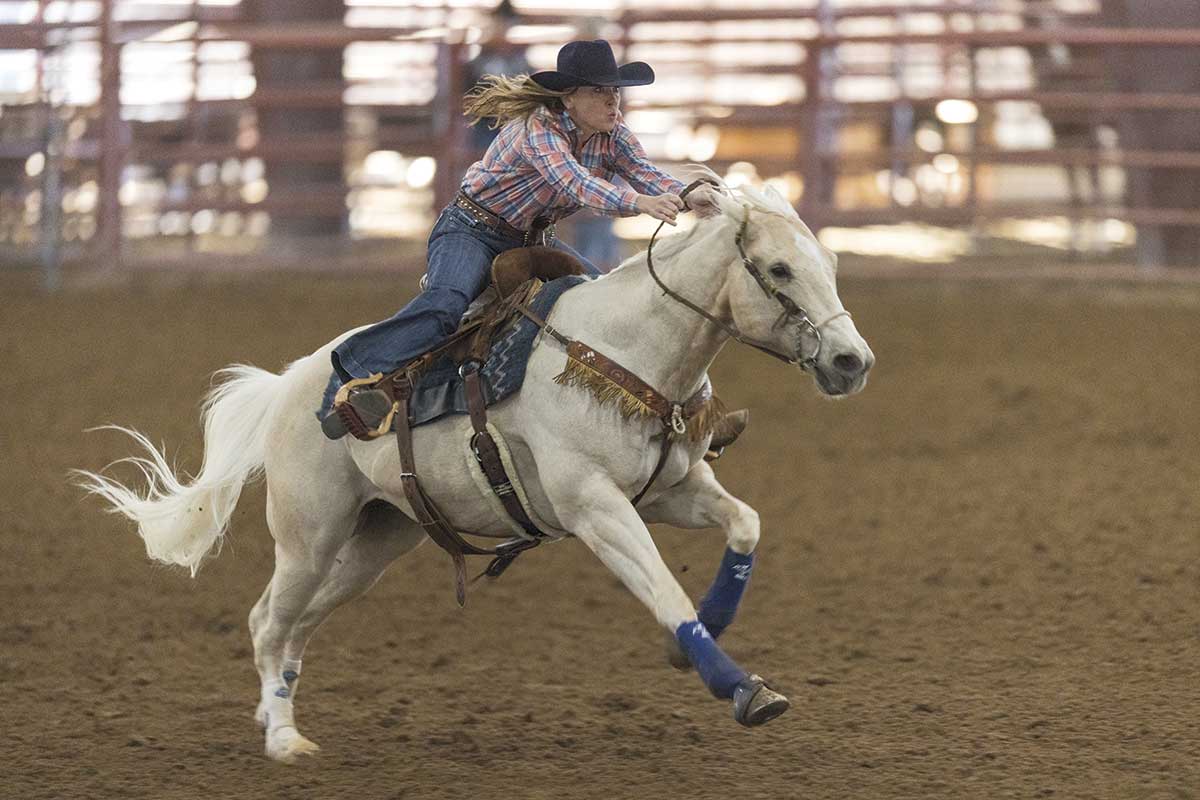
A barrel racer sprints to the finish line.
Julia Robinson
Earlier in her career, Bright could spend hours training on horseback, but these days, she rides for half an hour before giving her knees a break. “We have to have a lot of core strength to do what we do at our age,” she says. “Your hand-eye coordination needs to be real sharp. And if you don’t compete fairly often, like every two weeks or so, you get slower and slower.”
But Bright says other skills have only improved. Her ability to read animals gives her a competitive advantage that came with age. “You can anticipate nearly what a horse is fixing to do from each step that they take,” she says. “Each stride that they take, they’re telling you something if you’re really listening.”
Tomm Owens, vice president of the TSPRA board and a member of Heart of Texas Electric Cooperative, didn’t join the association until he was 50.
“I was competing in [pro] events when I was 35, 40, 45. I was one of them that held out,” says Owens, who’s trying to convince his friends to join. “Their pride just won’t let them be old yet.”
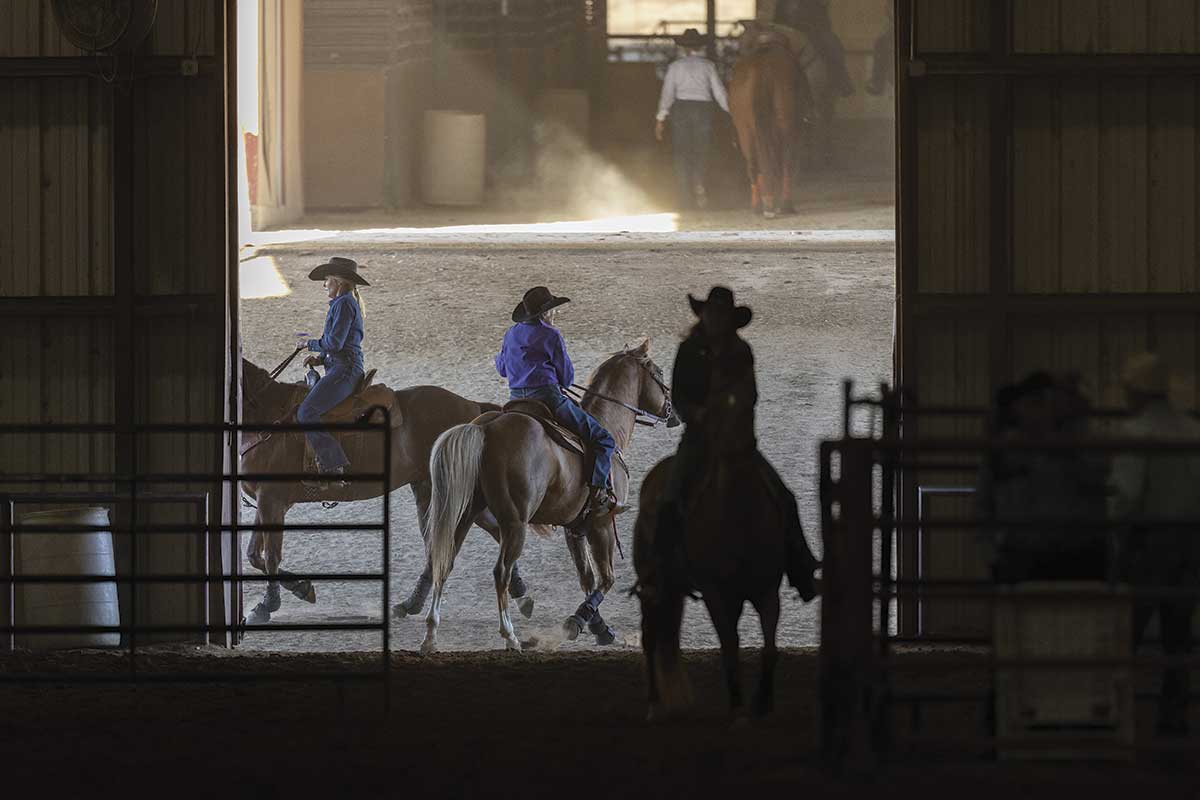
Barrel race contestants warm up their horses before the TSPRA finals.
Julia Robinson
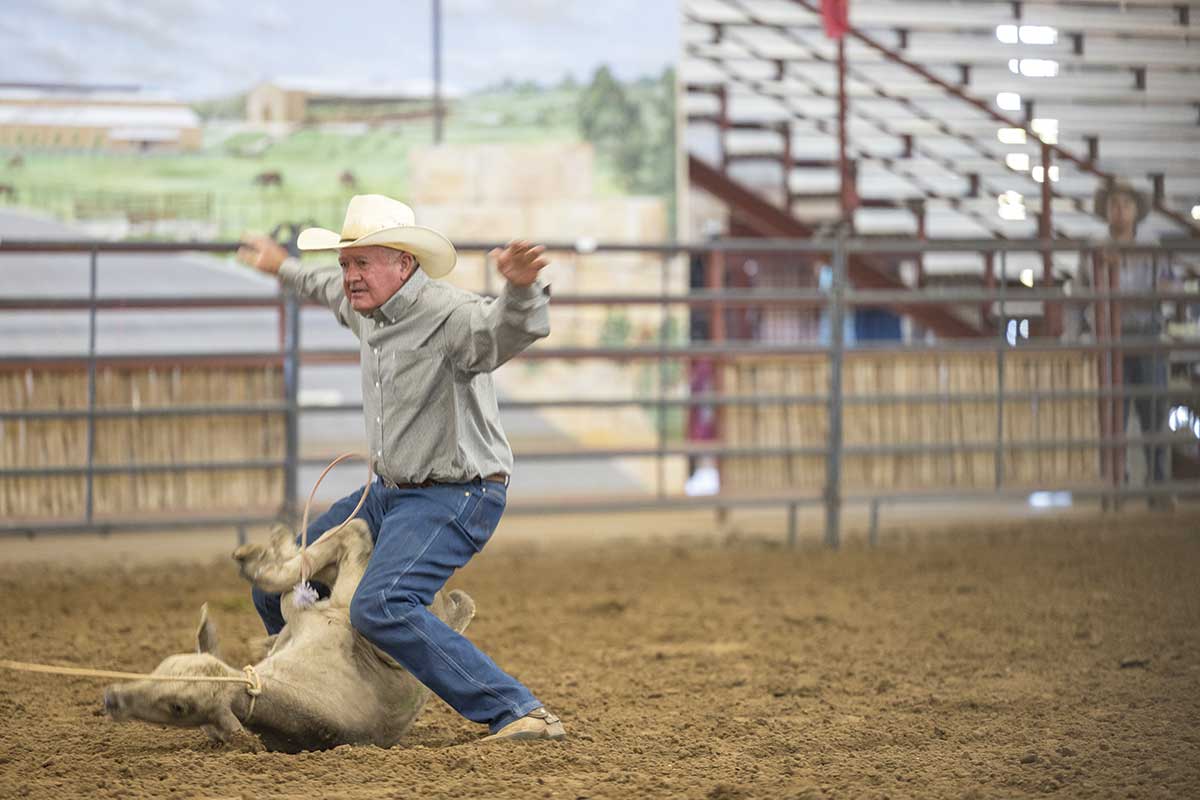
Llew Rust of Stephenville competes in the 70-plus age bracket.
Julia Robinson
For Owens, aging into a new bracket is part of the fun. “You kind of get excited again,” he says, “because you’re going to be the youngest in the group, and you’re hoping you’re one of the best.”
Like Bright, he says his experience gives him a competitive advantage—but for a different reason. “Mentally it’s easier as I get older. I don’t get as frustrated when things don’t go right,” Owens says. “You learn not to let the little things bother you.”
But he admits that the physical aspect only gets tougher.
“Once you get out of shape, it’s really hard at 55–60 to get back into shape,” he says. “I do 20–30 minutes of stretching every morning and then some situps and pushups.”
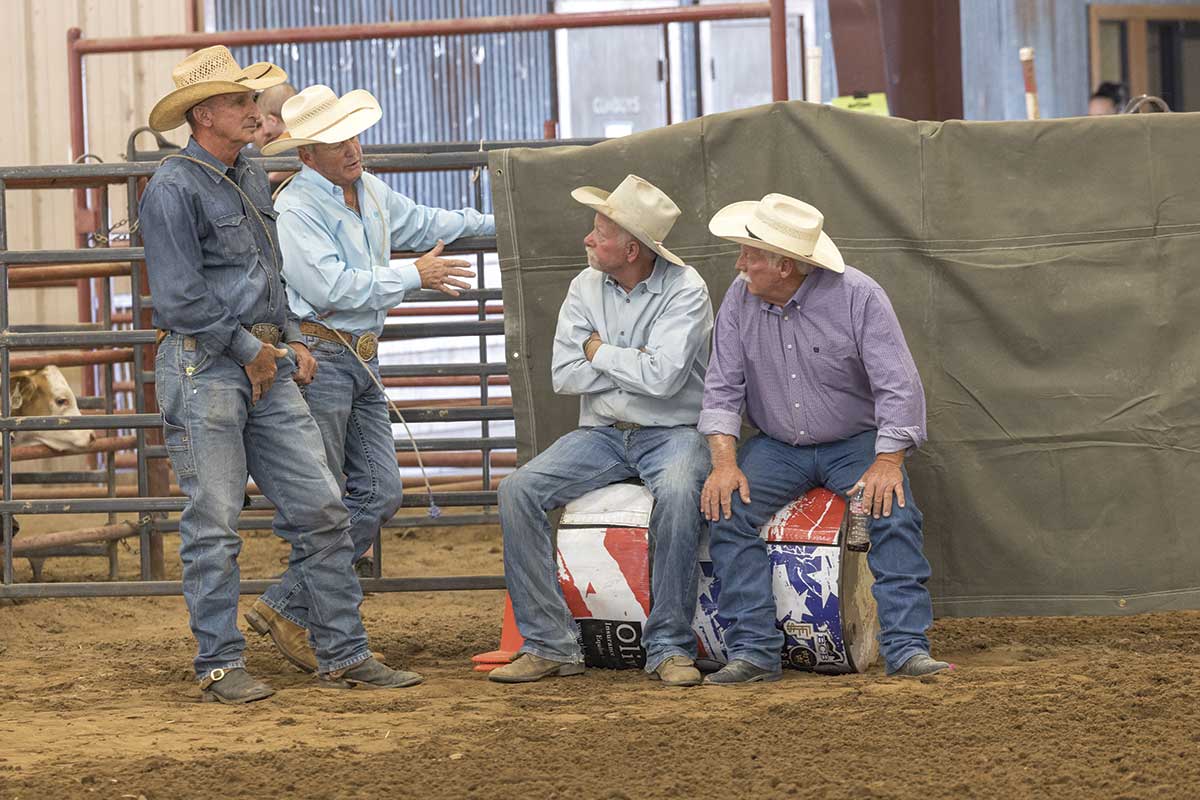
From left, Tomm Owens, Carl Cox, Ruben Wood and Sam Thornton visit during downtime in the action.
Julia Robinson
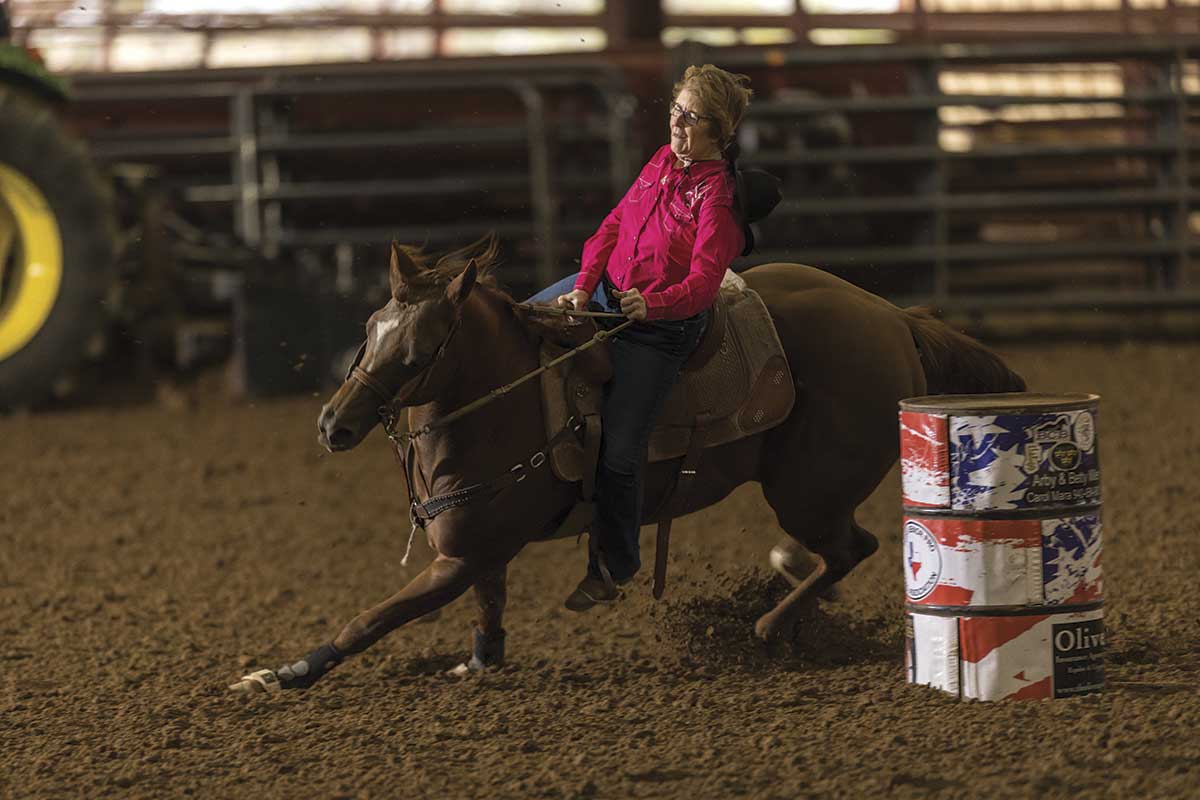
Pat Tobolka races around a barrel.
Julia Robinson
Jimmy Tobolka is living proof that bodies in motion tend to stay in motion. At 88, he’s TSPRA’s oldest member and still competes in the 80-plus breakaway, where a mounted rider ropes a running calf.
“Once you start doing it, it’s hard to get quit doing it, you know?” he says. “It’s helped keep me going all these years.”
One of the youngest members of the association is Seth Smithson, the president of the board, who turns 40 in December. “I think it’s a breath of fresh air from the hustle and bustle,” he says. The 2023 TSPRA statewide finals are October 19–21 at Circle T Arena in Hamilton. “You come hang out with the older crowd and watch these guys compete and see how great they are with their horses, and you can definitely learn a thing or two.”
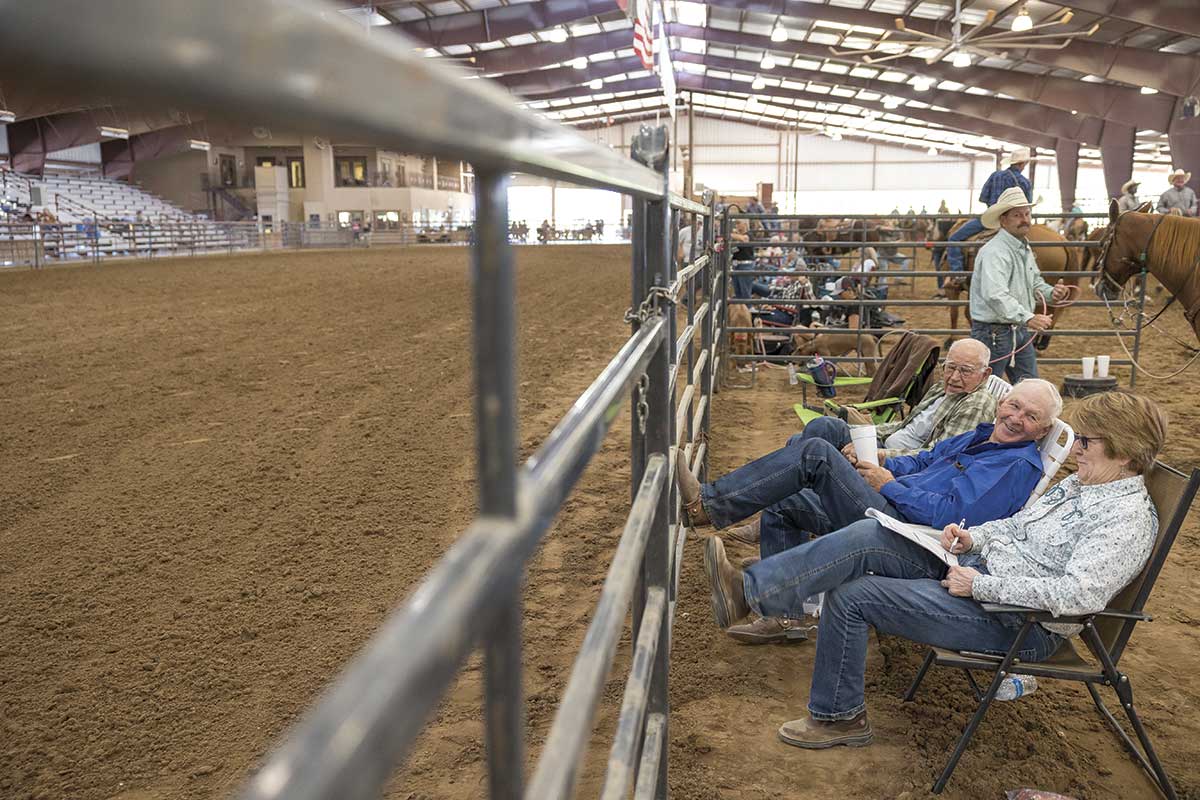
From left, Jimmy Tobolka, Bobby Hoff and Pat Tobolka chat between competitors.
Julia Robinson
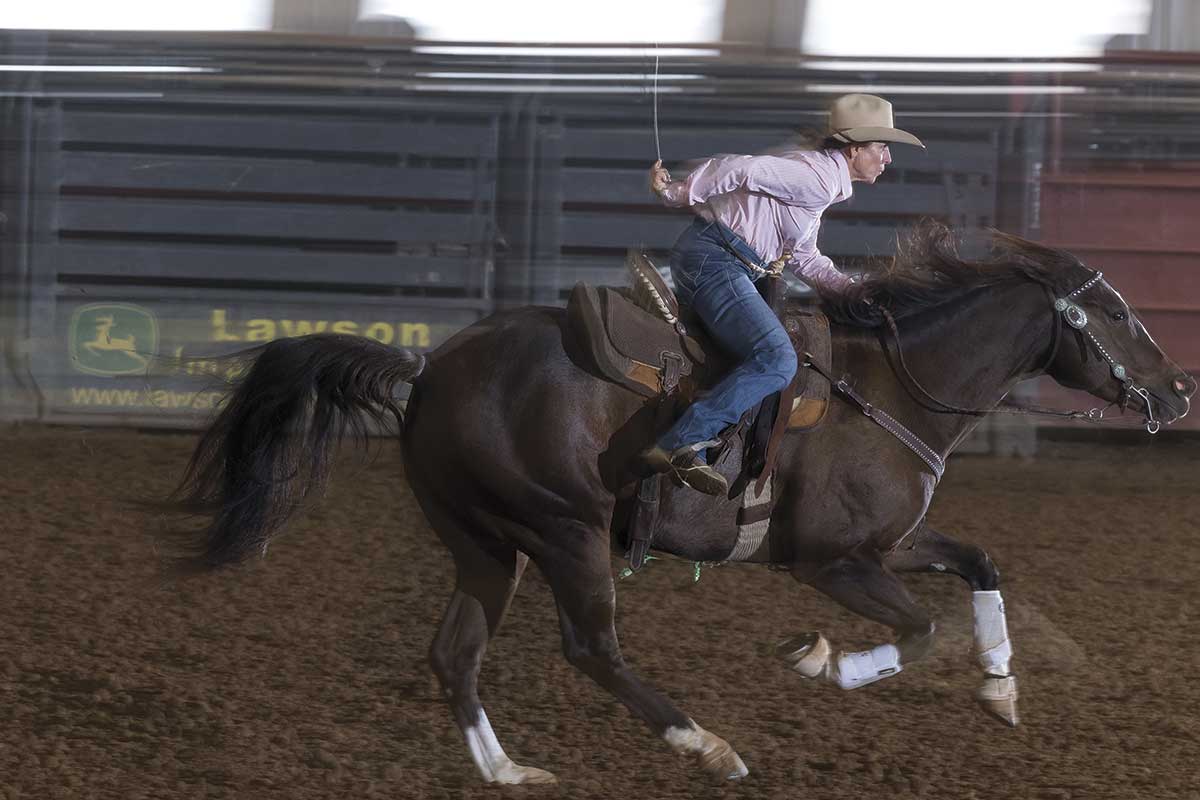
A sprint to the finish line.
Julia Robinson
The TSPRA’s prizes aren’t much—trophy saddles and buckles—but that’s not the main reason any of these competitors are here. “Nobody’s going to get rich at our rodeos,” Owens says. “So much of it is just being able to see all the guys you used to rodeo with, cook steaks out back at the trailers and eat a meal Saturday night with maybe 10 or 15 people at every other trailer. That’s a big, big part of it.”
But no one can question the enthusiasm and the dedication these athletes have for their sport—for continuing to hone their craft, even as their bodies falter.
“We’re all just very grateful to still be able to throw a leg over a horse,” Bright says. “And when you have that gratitude of still being able to do it, nobody’s moaning and groaning about winning.”
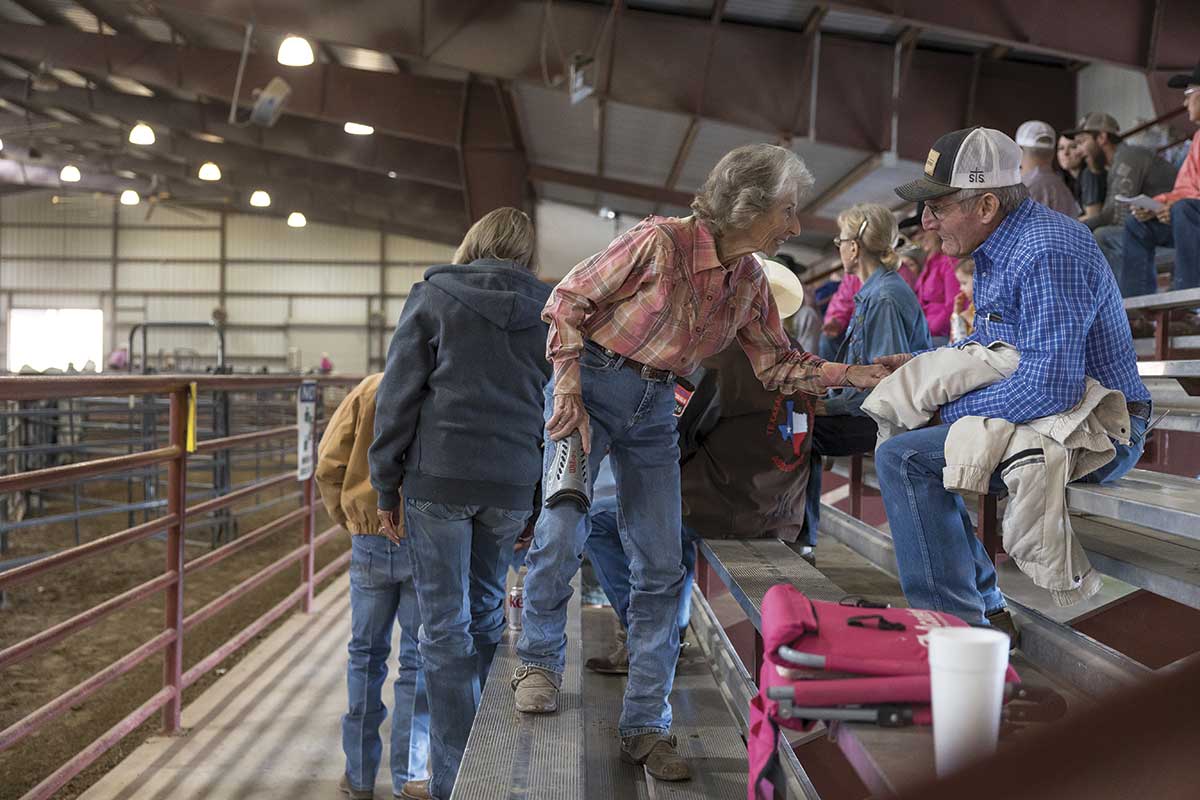
Cowgirl Willie Little, left, greets a friend in the stands.
Julia Robinson
